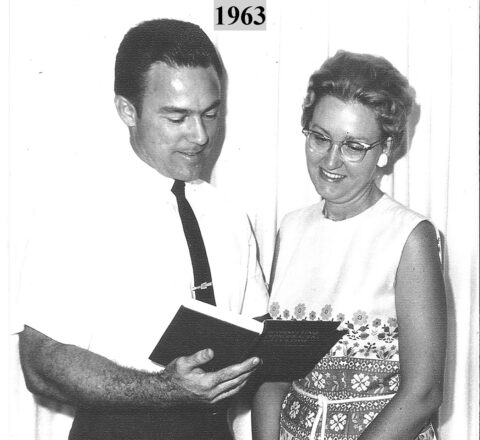I began private practice as a chiropractor in 1957. My book Bonesetting, Chiropractic and Cultism, published in 1963, renounced the vertebral subluxation theory that defines the practice of chiropractic as primary care capable of restoring and maintaining health simply by manipulating (“adjusting”) the spine to remove nerve interference. My colleagues called me as a “traitor” and I was denied membership in the American Chiropractic Association. I continued to write articles for journals and magazines, recommending that the chiropractic profession abandon the scientifically indefensible subluxation theory and seek development as a sub-specialty providing conservative care for mechanical-type neck and back pain, a designation not yet filled in physical medicine.
In the years to follow, I was inundated with hostile mail from subluxation-based chiropractors who threatened to have my chiropractic license revoked. Although chiropractic response to my published articles was mostly negative, the support I received from science-based healthcare professionals provided the inspiration I needed to continue writing. My book Inside Chiropractic was published by Prometheus Books in 1999.
Vindication
In 2019, researchers investigating the effects of spinal manipulation reported in a Global Summit that they found no evidence of an effect of spinal manipulative therapy for the management of non-musculoskeletal disorders, verifying what I have been saying since 1963. It is now clear that the all-inclusive vertebral subluxation theory formulated by a magnetic healer in 1895 is a tenuous belief that should be abandoned by the chiropractic profession. An asymptomatic chiropractic “vertebral subluxation complex” alleged to be a cause of disease has never been proven to exist, as opposed to a real orthopedic subluxation that causes musculoskeletal symptoms but has never been associated with organic disease. It is well known that spinal nerves supply skin and musculoskeletal structures while the body’s organs are supplied by a separate autonomic nervous system located outside the spinal column.
Properly defined and limited, chiropractic could fill a niche in mainstream health care by offering appropriate use of generic spinal manipulation in combination with rehab and physical therapy modalities, as I did in my 41 years of practice. Unfortunately, the chiropractic profession continues to define chiropractic as a form of alternative medicine embracing a broad scope of health problems rather than specialize in the care of back pain, despite the fact that back pain and neck pain continue to be the No. 1 and No. 2 cause of disability worldwide.
Acknowledgment
When I was nominated for the John Maddox Prize in 2023 for my stand on the side of science as a whistleblower who endured ostracism and isolation as a “chiropractic heretic,” I was greatly honored. The nomination was timely and comforting recognition at the end of my career as an embattled chiropractor who was dedicated to protecting public health by advocating reform of the chiropractic profession.
I did not win the John Maddox Prize, but the nomination alone is a treasured footnote that enhances my legacy as a “chiropractic heretic,” adding a positive note to the final page of my autobiography, Sam’s Story: The Final Chapter.

My wife, Martha, and I review the first copy of my book Bonesetting, Chiropractic and Cultism, published in 1963. Martha shared and endured the aftermath of my published work on the subject of chiropractic, providing love and support during difficult times.
Excerpts from Letters to a Chiropractic Heretic, 2012
The Aftermath of Bonesetting, Chiropractic, and Cultism
In view of the absence of any extensive histories of chiropractic, this book has a place in medical collections and reference libraries. –Eric Meyerhoff, Director., The Medical Library Center of New York, N.Y.C., Library Journal February 1, 1964
In regard to your recent application for membership in the American Chiropractic Association and insurance in the National Chiropractic Insurance Company, please be advised that the ACA membership committee has rejected your application. -H.W. Pruitt, D.C., Executive Secretary, American Chiropractic Association, May 17, 1965
I purchased your book some months ago on Bonesetting, Chiropractic, and Cultism. I found it to be a most intriguing and enlightening publication which has been of value to me in some of my own studies in medical anthropology. James G. Roney, M.D., Ph.D., Stanford Research Institute, November 11, 1965
I was more impressed by your criticisms of chiropractic than by those of any other writer, since you are a practicing chiropractor. I think every candidate for chiropractic college should read your book, or at least every student in his first year. –Walter Wardwell, Ph.D., Professor of Sociology, University of Connecticut, August 26, 1976
Thank you for your book Bonesetting, Chiropractic, and Cultism. I found it well-written and most interesting. I have read quite a bit of material on the chiropractic controversy by authors on all sides of the issue. I rank your book among the very best. -William Jarvis, Ph.D., Associate Professor, Loma Linda University, October 22, 1976
I just re-read your chiropractic book and enjoyed it even more than I did five years ago. Your reasoning and predictions have held up remarkably. -Stephen Barrett, M.D., Lehigh Valley Committee Against Health Fraud, July 28, 1979
Unfortunately unknown to most chiropractors, and unavailable at many if not most chiropractic college libraries, Bonesetting, Chiropractic, and Cultism is must reading for chiropractic historians….Perhaps the profession will finally seek out this seer before his most dire predictions come to pass. -Joseph Keating, Ph.D., Professor, Palmer College of Chiropractic-West, Dynamic Chiropractic, January 3, 1990
Fifty years ago, you already expressed some of the things few dare write today! If chiropractic had had more people like you early on, it would be a respectable profession today. -Edzard Ernst, M.D., Ph.D., Professor, Peninsula Medical School, England, January 12, 2010

